5 Things You Didnt Know About Shingles

Any fauna that tin can change colours and look in two directions at once is worth learning more most. Armed with a natural language yous accept to run across to believe, the chameleon may be one of the coolest reptiles on the planet. Here are 10 things y'all may not have known about our lizard friend.
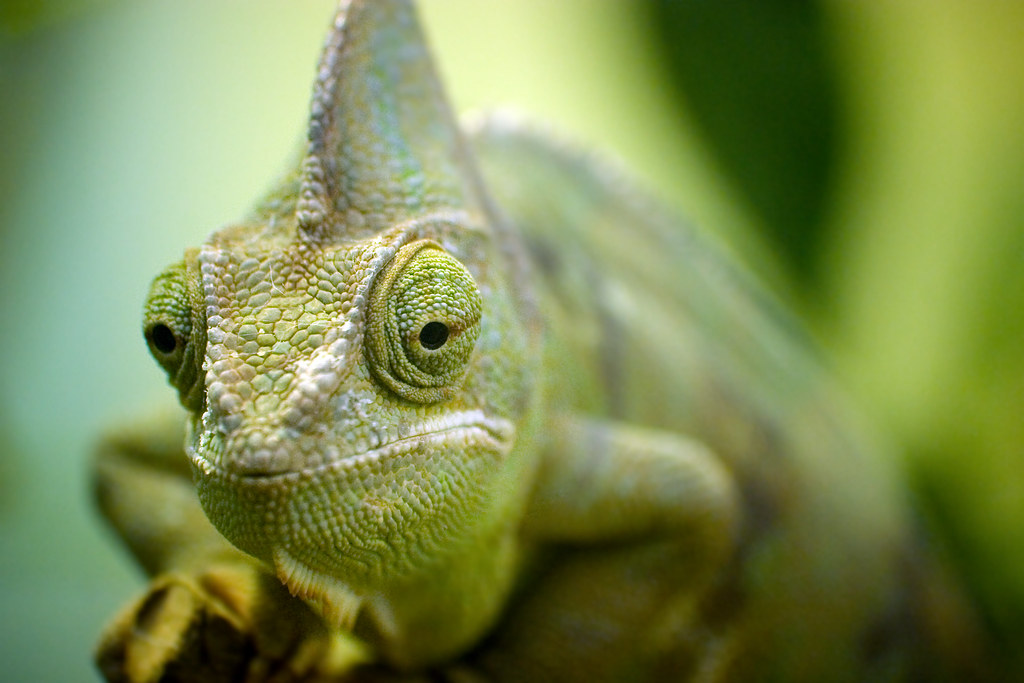
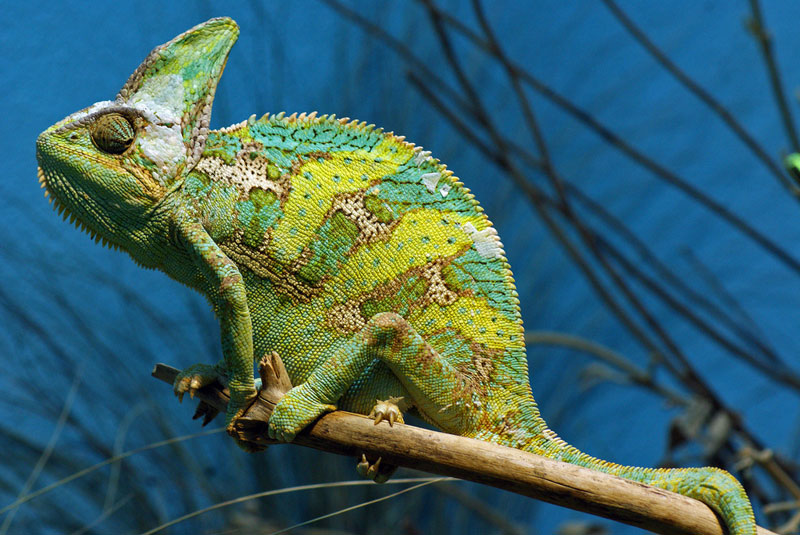
1. Almost half of the world's chameleon species live on the island of Madagascar, with 59 dissimilar species existing nowhere outside of the island. There are approximately 160 species of chameleon. They range from Africa to southern Europe, and beyond south Asia to Sri Lanka. They take also been introduced into the United States in places such as Hawaii, California and Florida. [Source one, Source 2]
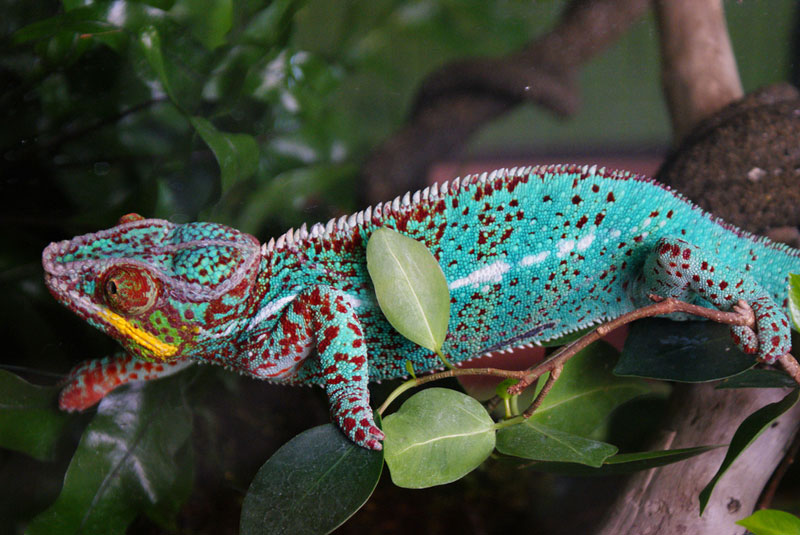
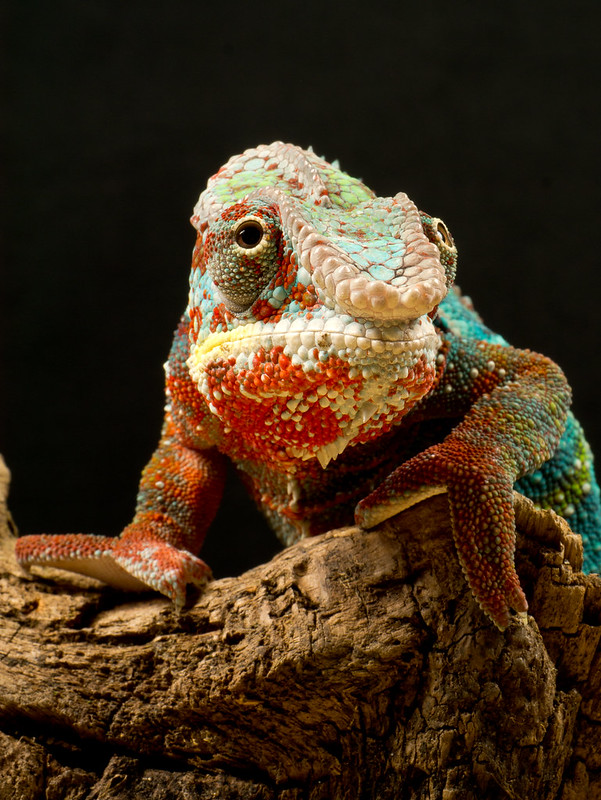
2. Colour Changing. Most chameleons change from brown to light-green and back, simply some can turn almost any color. A change tin can occur in as little every bit 20 seconds. Chameleons are built-in with special cells that have a colour or pigment in them. These cells lie in layers nether the chameleon'due south outer skin. They are called chromatophores. The meridian layers of chromatophores accept red or yellow paint. The lower layers have blue or white pigment. When these pigment cells change, the chameleon'due south skin color changes.
Chromatophores change considering they get a message from the brain. The bulletin tells the cells to overstate or to shrink. These actions cause cell pigments to mix—just like pigment. A chemic chosen melanin also helps chameleons turn colour. Melanin fibers can spread like spiderwebs through layers of paint cells and their presence causes skin to darken.
Many people remember chameleons change colour to alloy in with their environs. Scientists disagree. Their studies show that light, temperature and mood cause chameleons to change colour. Sometimes changing color can make the chameleon more comfortabl. Sometimes it helps the animal communicate with other chameleons. [Source]

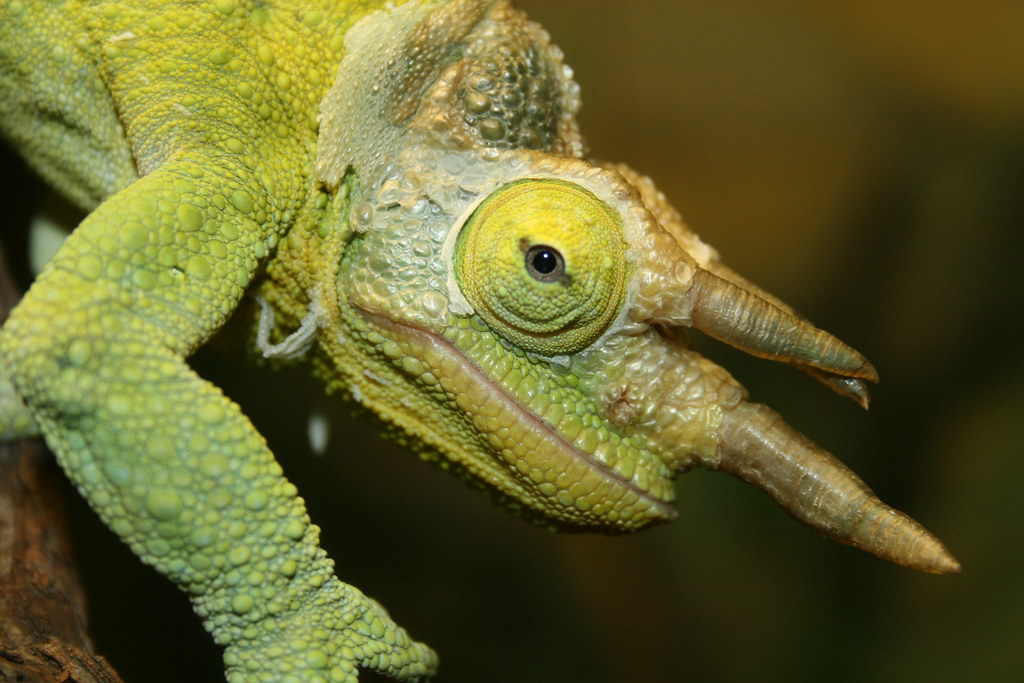
3. Chameleon eyes take a 360-degree arc of vision and can encounter 2 directions at once. Chameleons have the most distinctive eyes of any reptile. Their upper and lower eyelids are joined, with only a pinhole large enough for the educatee to see through. They tin rotate and focus separately to observe ii different objects simultaneously, which lets their eyes motility independently from each other.
This gives them a full 360-degree arc of vision around their torso. When prey is located, both eyes can exist focused in the same management, giving sharp stereoscopic vision and depth perception. Chameleons have very good eyesight for reptiles, letting them run across small insects from a long (5–ten k) distance. [Source]
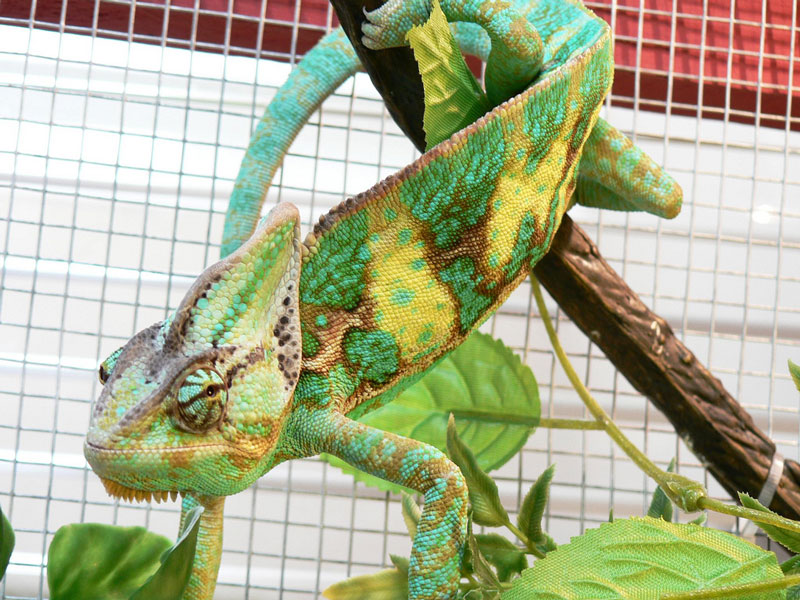
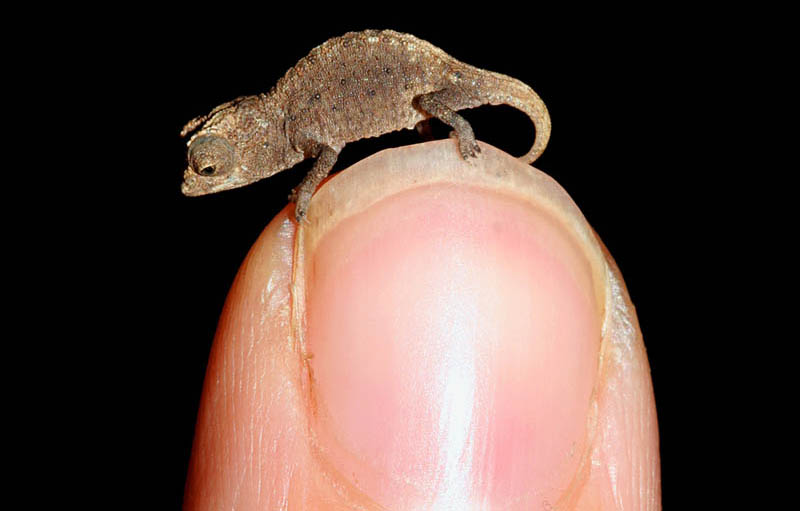
4. Chameleons vary greatly in size and body construction, with maximum total length varying from 15 millimetres (0.6 in) in male person Brookesia micra (one of the world'southward smallest reptiles) to 68.5 centimetres (30 in) in the male Furcifer oustaleti.
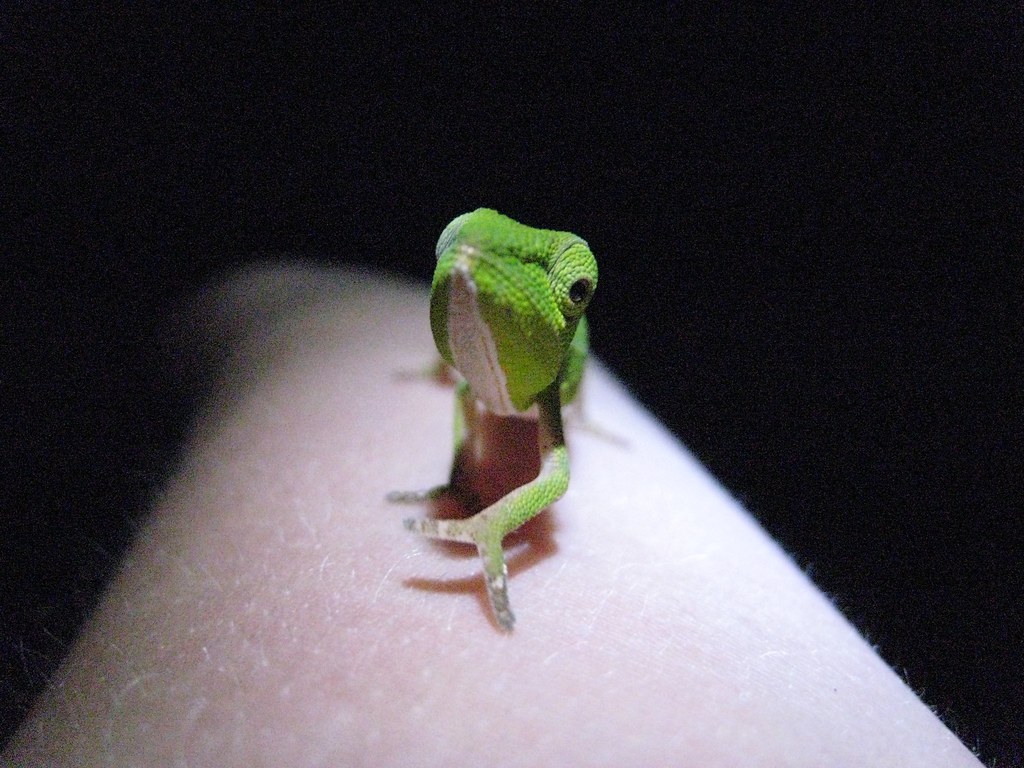
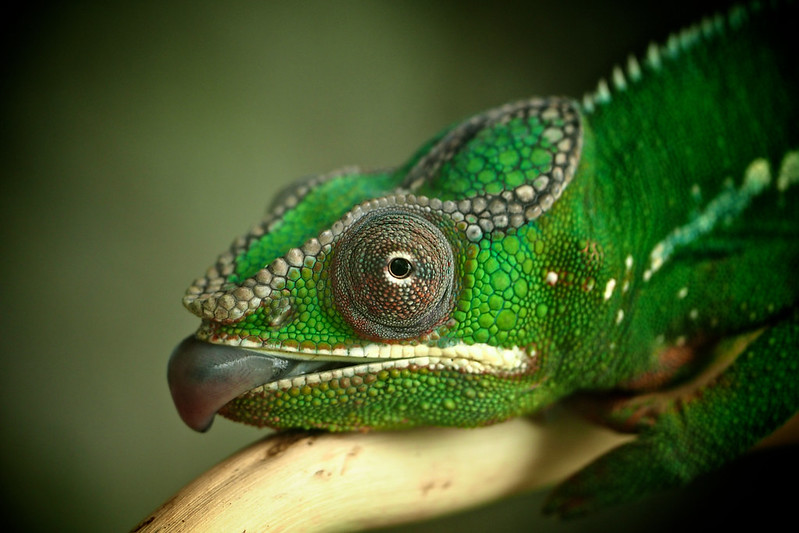
v. Ballistic tongues that are 1.v-ii times the length of their body. Chameleons feed by ballistically projecting their long tongue from their oral fissure to capture prey located some altitude abroad. While the chameleon'southward tongue is typically thought to be 1.v to 2 times the length of their body (their length excluding the tail), it has been recently discovered that smaller chameleons have proportionately larger tongue apparatuses than their larger counterparts. Tongue projection occurs at extremely loftier performance, reaching the prey in equally little as 0.07 seconds, having been launched at accelerations exceeding 41 g. The chameleon tongue'due south tip is a bulbous brawl of muscle, and equally it hits its prey it apace forms a modest suction cup. [Source 1, Source 2]
6. Happy Feet. The feet of chameleons are highly adjusted to motion in trees (arboreal locomotion). On each human foot at that place are five clearly distinguished toes that are grouped into a flattened section of either ii or 3 toes, giving each pes a tongs-similar appearance. On the front end feet the outer group contains two toes, whereas the inner group contains three. On the rear anxiety this arrangement is reversed. These specialized anxiety allow chameleons to grip tightly onto narrow or crude branches. Each toe is likewise equipped with a precipitous claw to assist grip on surfaces when climbing. [Source]
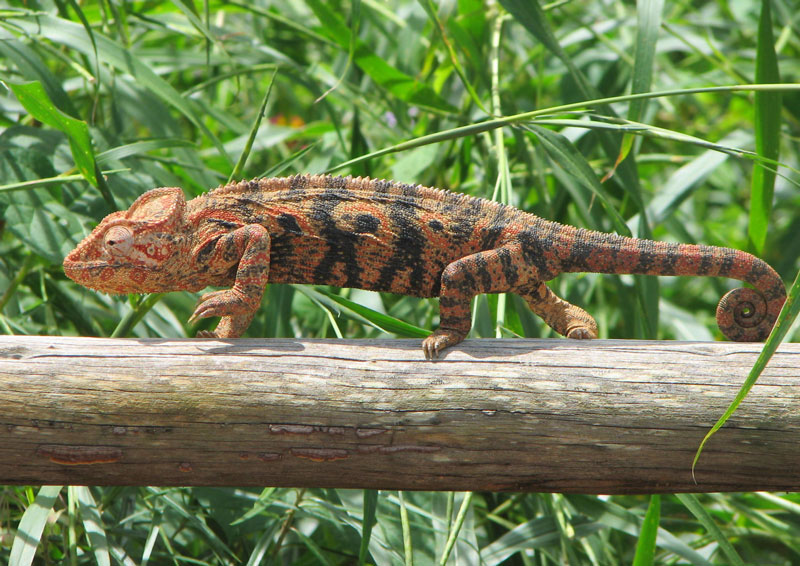
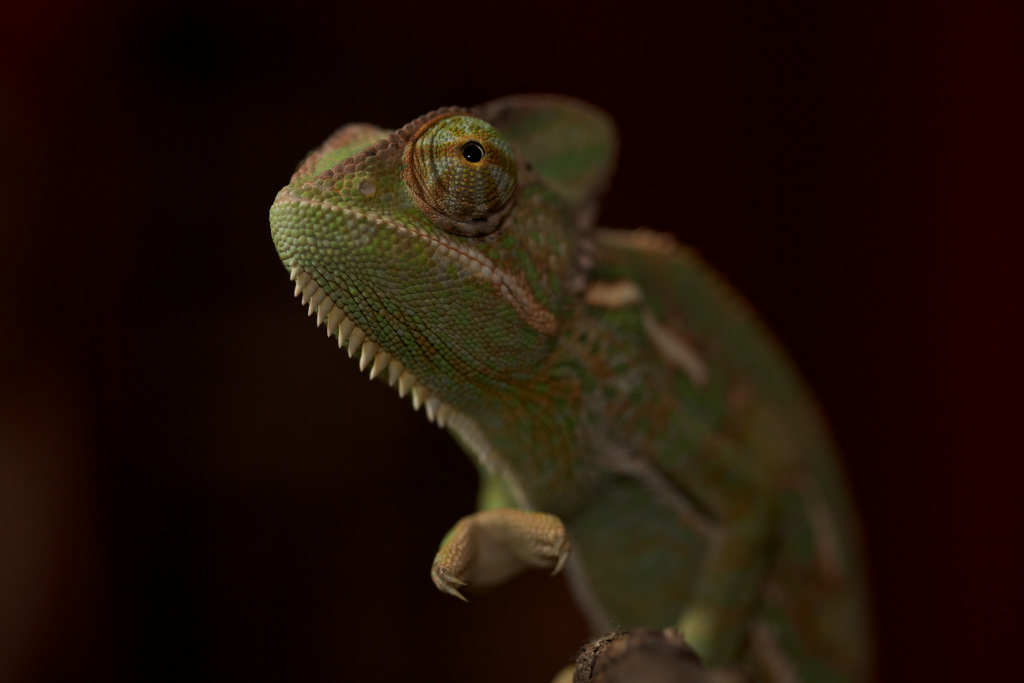
7. Males are typically much more ornamented. Many have head or facial ornamentations such equally nasal protrusions or horn-like projections. Others can have big crests on top of their head. [Source]
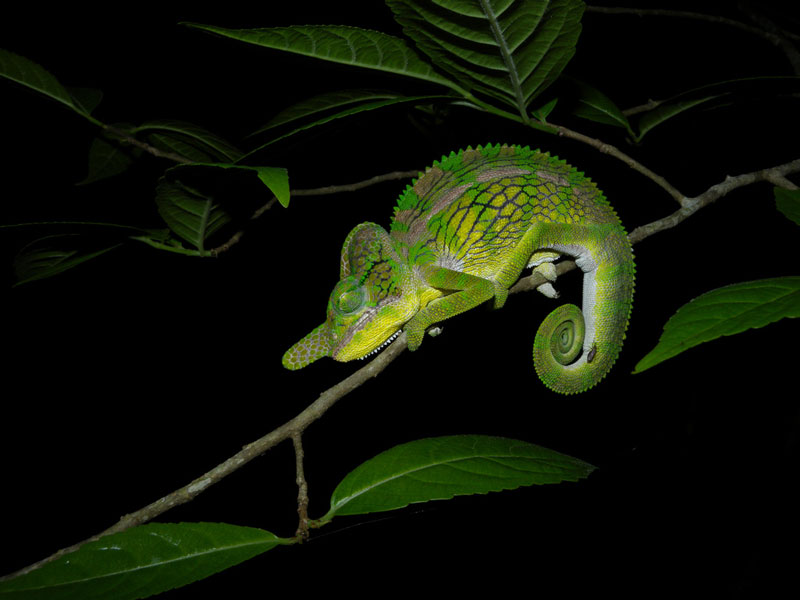
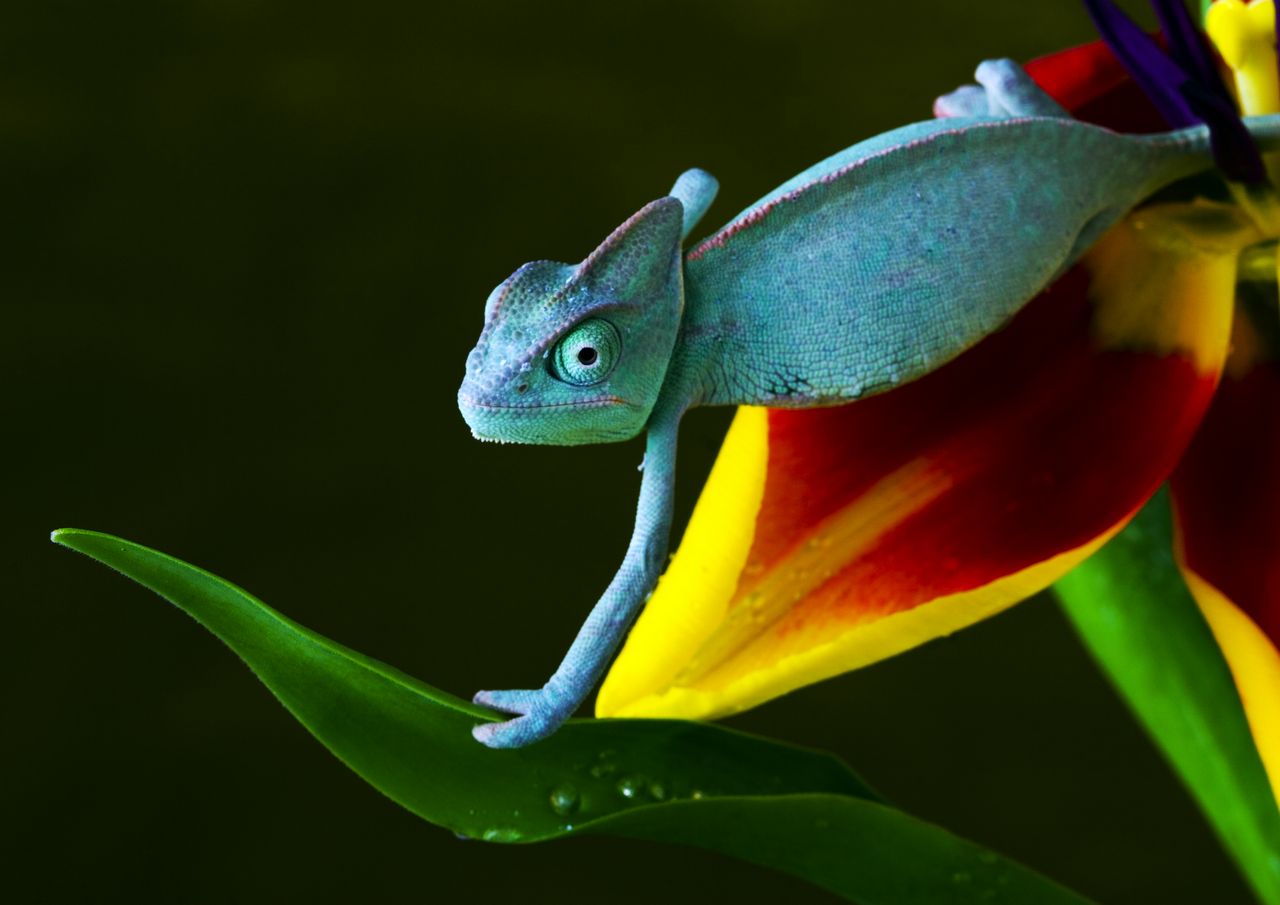
viii. Chameleons can't hear much. Like snakes, chameleons do not have an outer or a middle ear and then in that location is neither an ear opening nor an eardrum. However, chameleons are non deaf. They tin can detect sound frequencies in the range 200–600 Hz. [Source]
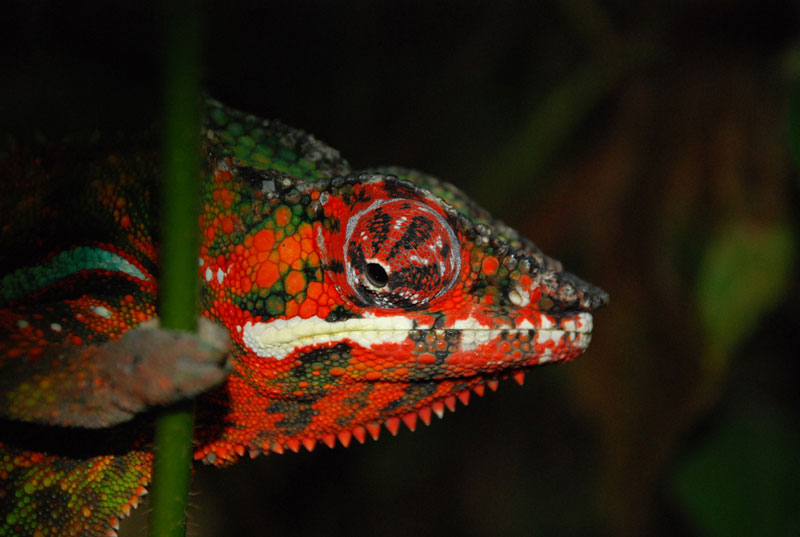
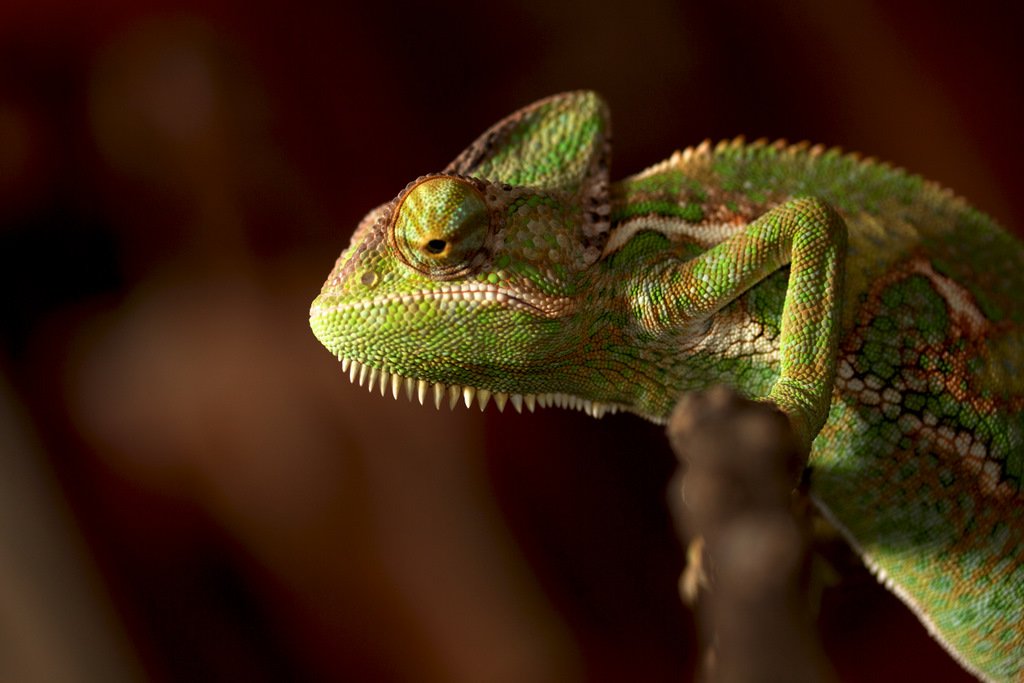
9. Ultraviolet vision. Chameleons can see in both visible and ultraviolet light. Chameleons exposed to ultraviolet low-cal show increased social behaviour and action levels and are more inclined to bask and feed. They are too more likely to reproduce as information technology has a positive effect on the pineal gland. [Source]
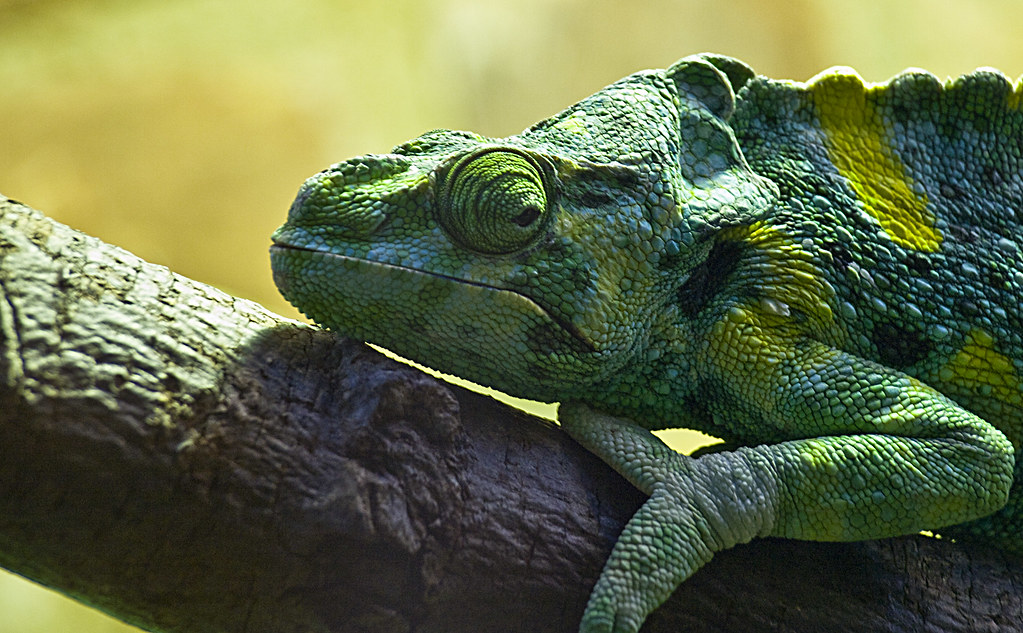

10. The American chameleon is non actually a chameleon. The American chameleon, or anole (Anolis carolinensis), is not a truthful chameleon, but a small lizard of the iguana family. Information technology is plant in the SE United States and is noted for its colour changes. [Source]

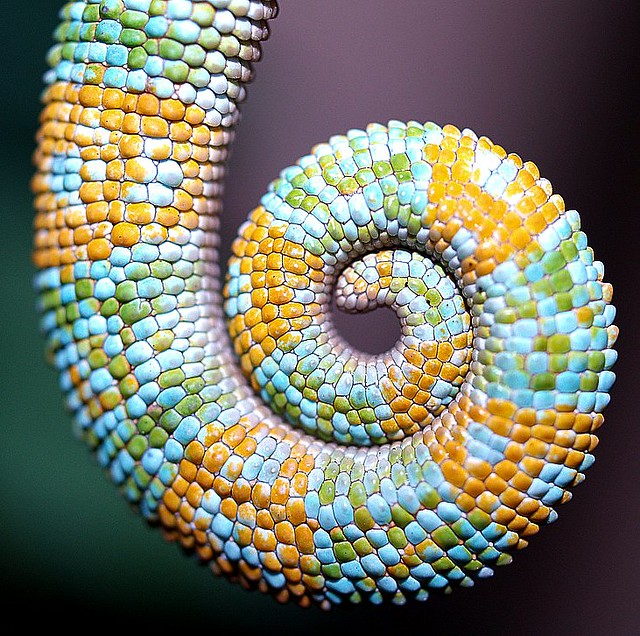
Sources
– Wikipedia
– National Geographic
– PBS.org
– The Columbia Encyclopedia
– Facts-most.org.united kingdom
If yous enjoyed this post, the Sifter
highly recommends:
![Top 10 Facts of the World's Largest Land Animal [20 pics] elephant cooling itself 10 Things You Didnt Know About Chameleons](http://twistedsifter.com/wp-content/uploads/2010/12/elephant-cooling-itself.jpg)
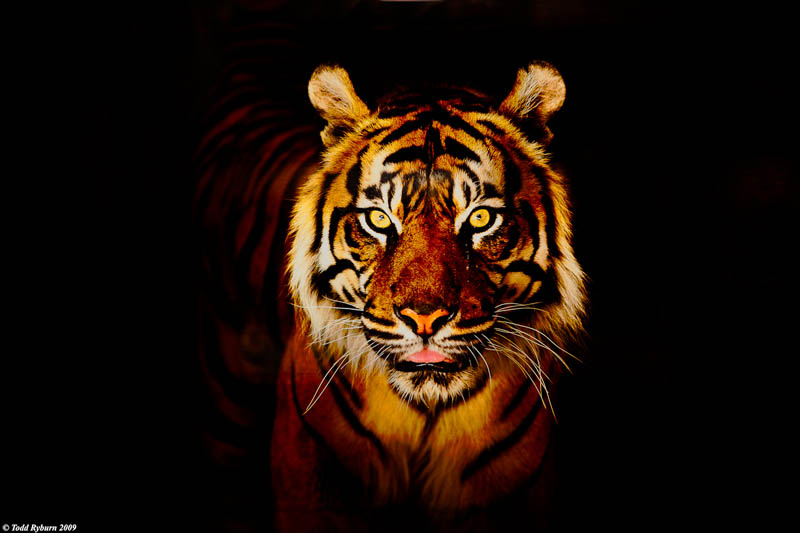
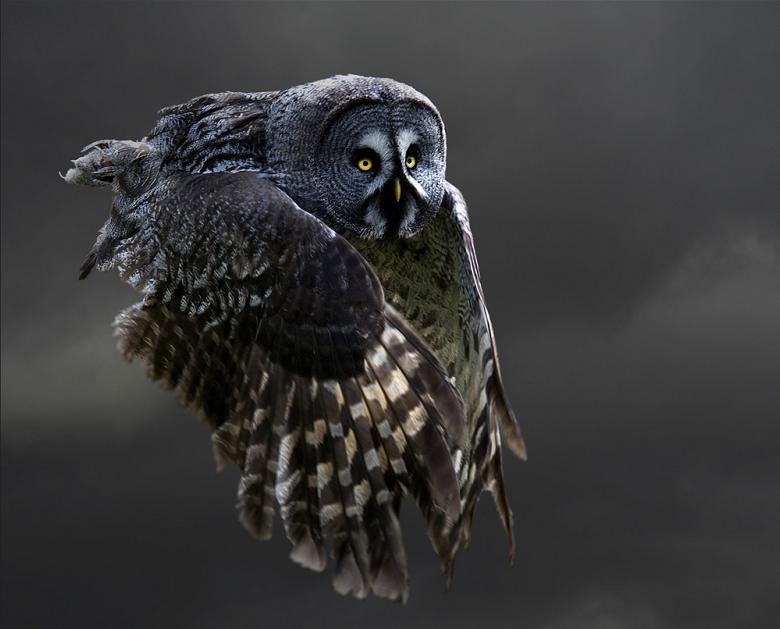
Source: https://twistedsifter.com/2012/11/ten-things-you-didnt-know-about-chameleons/
0 Response to "5 Things You Didnt Know About Shingles"
Post a Comment